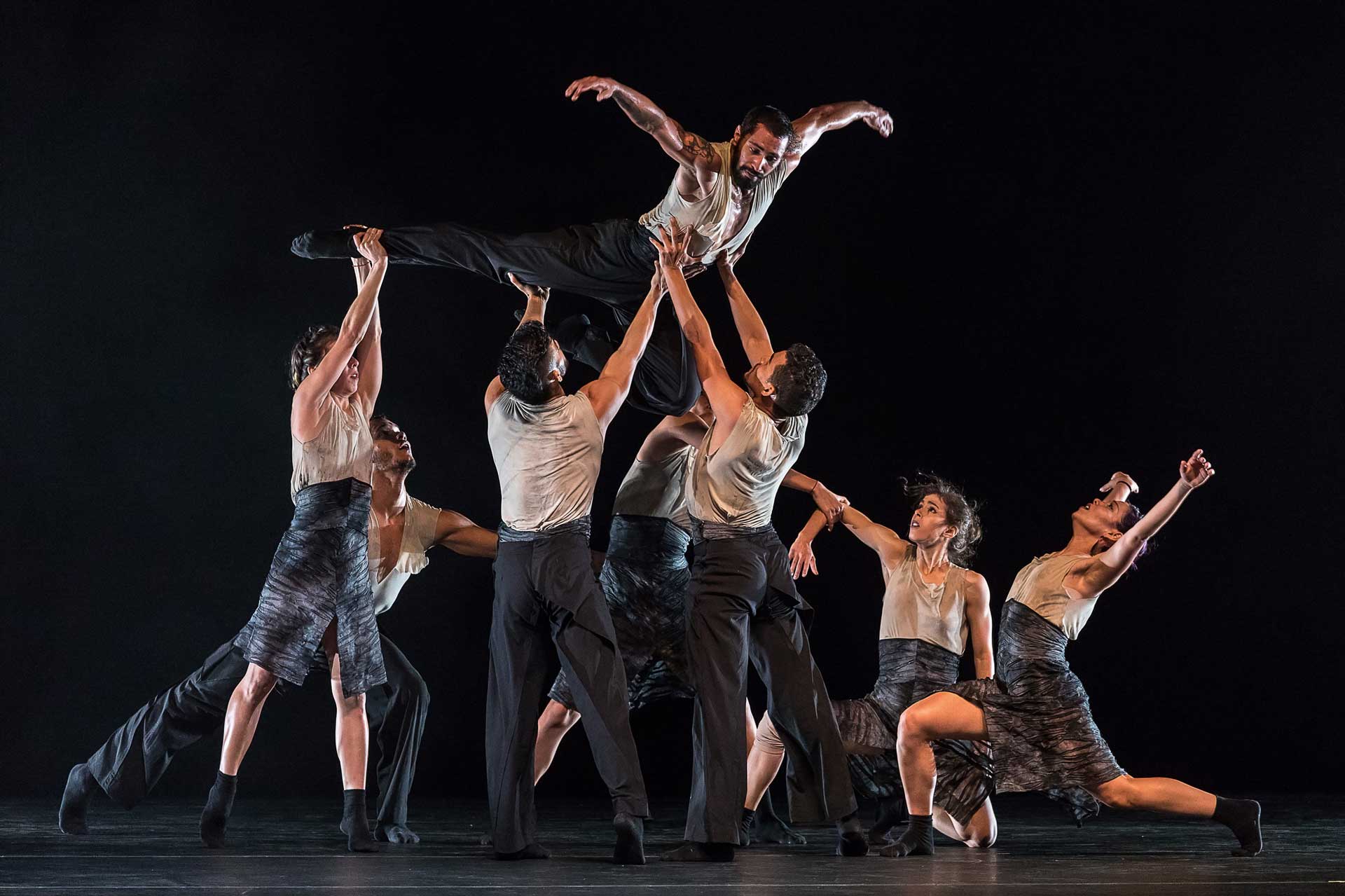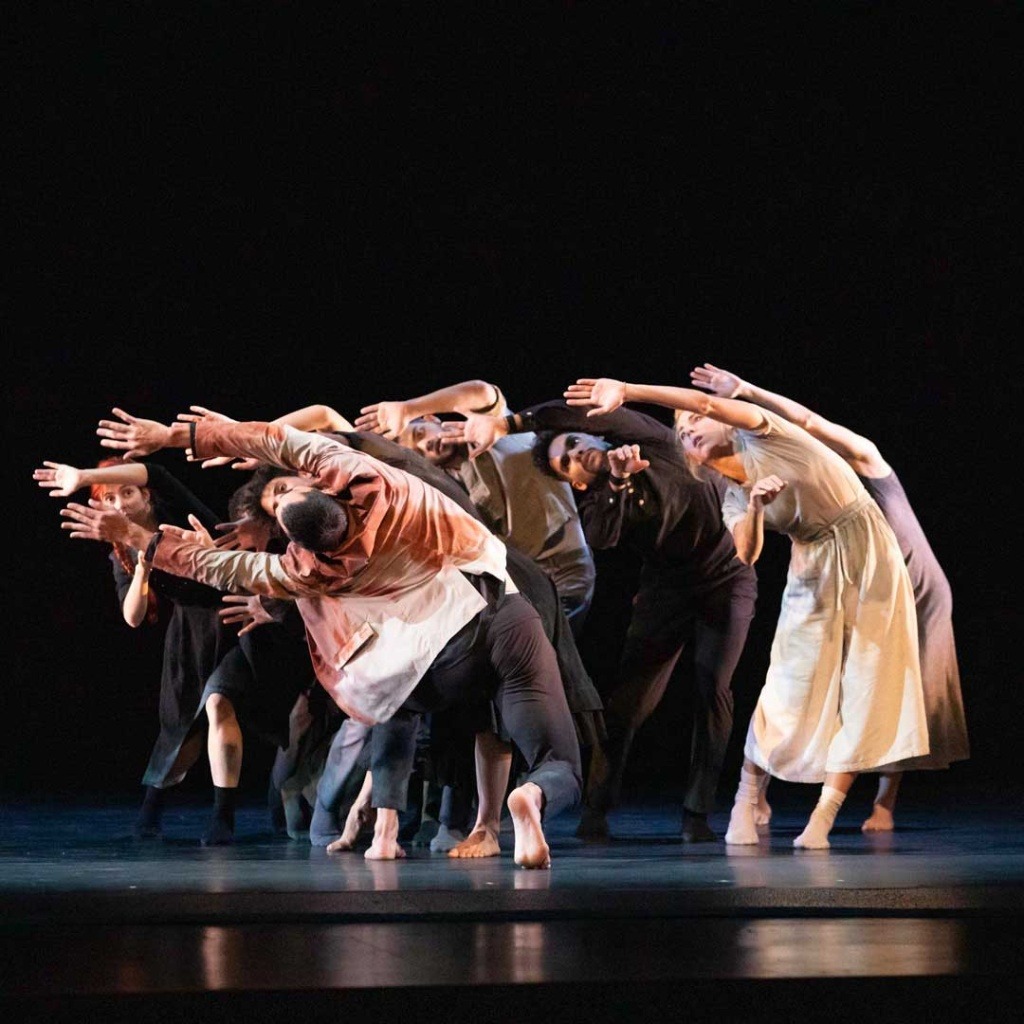From Oz Arts:
Malpaso, Fusion of Modern Dance and Cuban Innovation: No Missteps Here
The healthy evolution of modern dance was clear Friday night, April 29, 2022, when Malpaso made its Nashville debut at the OZ Center. Founded in 2012 by a triumvirate consisting of Executive Director Fernando Sáez, who generously posed with audience members post-performance; Artistic Director Osnel Delgado, and Co-Artistic Director Daileidys Carrazana, Malpaso, which translates to “misstep,” engages in collaboration with international choreographers while preserving their island roots. Delgado, for example, dances in the program, and Carrazana, trained at Cuba’s national school of ballet, employs her formidable talents as both choreographer and dancer, starting with her choreography, Lullaby for Insomnia.
Walking onto a bare black stage lit by one lone spotlight, Heriberto Maneses is accompanied by music of Catalan composer Jordi Sabatés Navarro. Choreography and music, alternating lively ragtime with somber blues and moments of silence is the perfect incarnation of a restless mind suffering insomnia. The movements, from Charlie Chaplin-esque quaintness to abrupt Pierrot Lunaire-like strangeness, and elegant catlike extensions make for the unexpected, yet effective. Gestures like playing with the dark stage curtains as the music reflects elements of samba and Cuban son, end with stretching in the same exquisite body articulation Maneses shows throughout this choreography. Perfect opener, leaving the eager audience anticipating the strength of this company.

This anticipation is confirmed in the next work, woman with water. Created by Swedish choreographer Mats Ek, this piece for one woman, one man, a table, and a glass of water is an “expressionist duet,” an ideal follow-up to the references to Arnold Schoenberg’s expressionist masterwork, Pierrot Lunaire in Carrazana’s piece. Both Ek and Schoenberg explore Freudian inner conflict.
The choreographer terms this a duet, but not a pas de deux, since the woman’s role is preeminent. But the story is more like purposely disconnected interactions, using music by the Swedish band Fläskkvartetten. Although translated as “Fleshquartet,” ironically, “fläsk” is actually Swedish for “come on, get with it” and the group is a quintet of amplified string quartet and percussion.
This memorable work begins with Dunia Acosta barefoot on a bare stage in a loose orange shift, approaching a startlingly green table to the throbbing sounds of vibraphone, glockenspiel, and strings playing col legno (using the bow’s wood instead of the hair). She wields power over the table, lifting it, sliding it, grabbing it wholly with her arms and legs. When Malpaso cofounder Osnel Delgado enters, fully dressed in a shadowy grey suit and black shoes, her power disappears. He pours a glass of water, then lifts her, so her feet scamper around the table top. She seems alternately weightless and dead weight.
When he leaves to drumming and melody reminiscent of an Indian raga, she regains her strength, exploring the one drawer in the table, powerfully writhing under the table as if under water, rising to drink the water just before he returns. He takes the drawer, pours her more water, which she drinks and dies, sprawled out in her orange dress on the black floor. In a shocking move, he gets a janitor’s broom and sweeps her off the stage, as stagehands come to remove the props. It’s as if this woman was just a prop. Because of the dancers’ excellent control of their craft, technique became a mere afterthought, providing space to focus on meaning in Ek’s piece. True art.
To Malpaso dancer, Esteban Aguilar, Robyn Mineko Williams’ Elemental represents a new way of moving, expressing “la naturalidad de ser humano [the natural ease of being human].” This piece showed Malpaso at its best and its best is good indeed. The multi-textured melange of music—a constantly changing array from the Latin sensuality of Ernesto Lecuona to the deep spirituality of Arvo Pärt, with music composed by the choreographer herself—perfectly matched the multi-textured melange of movements.

In music, the main textures are monophonic (one musical line), homophonic (featured line accompanied by harmony), and polyphony (independent lines occurring simultaneously). Working in collaboration with the dancers, all in workout clothes of neutral colors with the exception of one male dancer in pants and muted red jacket, Williams has created this musical language in physical form, especially in the gorgeous pas de deux where the Carrazana and her partner harmonize beautifully with one another.
But much of the work was polyphonic with single dancers, small groups, and the entire company, separate but simultaneous. The opening drumming gave a sense of ancient rituals of humankind. At one point, a couple breaks away from the troupe to do a traditional slow dance to fifties-style music. Such gestures clearly express the elemental nature of what it means to be human in physical form.
Part of the magic lies in each movement, clearly gauged to the specific body of the dancer who performed it. Malpaso’s accuracy in timing and precision highlighted this magic throughout the piece, including the ending return to ritual when one dancer falls into frenetic motions of stylized seizures. Red-jacket man and one final dancer sooth him with their bodies. This piece, in both music and dance, is the embodiment of transcendentalism, the infinite variety of the universe, connected by an underlying unity.
For Aszure Barton’s Stillness in Bloom, the company entered one by one, creating a simple growing pattern swirling on the stage like the petals of a blossoming flower to the cool sounds of Ambrose Akinmusire’s jazz combo.
Depicting Barton’s goal of “isolation and longed-for reunions,” this performance was weakest, ironically, because of its simplicity. When a group of dancers does the same movements, differences in technical polish are more apparent—a higher lift of an arabesque here, the missing continuity of an arm gesture there. But without the superb quality of the first half, these details would not even be noticeable.
Barton’s extended pas de deux, was a truly notable exception. The dancers are in two facing rows, as still as the title, the music dramatically ceased. Only one couple moves, beautifully winding around each other, until the female dancer drags her partner to center stage. In the continuing stillness, the company leaves the stage and the couple continues, with him face-up on all-fours, at one point, lifting his torso to act as her hammock. This deservedly well-received program shows that Malpaso rarely misses a beat. They perform a second time on Saturday April 30 at 8 pm.



